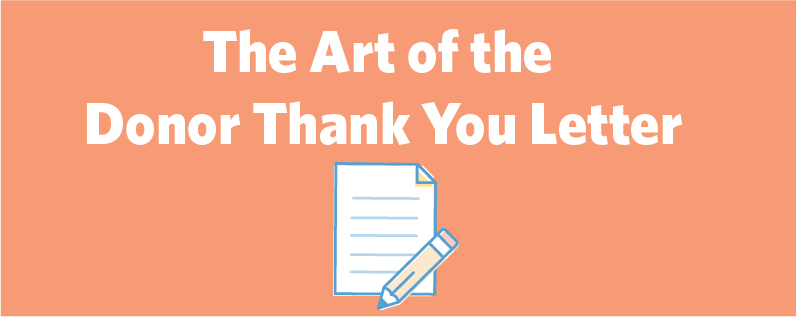
In my experience with nonprofits, the most meaningful takeaway is how important it is to thank people.
Whether it’s a note to a friend, or acknowledging the person who let me in front of them during my morning commute, I still use this lesson on a daily basis.
Timing is everything. After receiving a donation, it should be your goal to turn around a thank you letter as soon as possible. How long you have depends on what kind of thank you letter you are sending. Here are some of your options:
Join us for a free webinar, Create and Send Your Nonprofit’s Email Campaign in 15 Minutes or Less.
Handwritten thank you notes
The most impactful thank you is a handwritten note. This type of thank you is extremely personal, and should be used for important or large donations. The only downside to sending is that it takes time, so it would not be appropriate to thank a large number of donors this way. Additionally, this approach requires mailing the letter, taking days to be delivered, not to mention the potential of a sore wrist!
Typed thank you letters
If you are looking to thank your donors with a tangible note, but don’t have time to write out each one, you could use a typed template and pull in names, addresses and donation amount. To maintain a personalized feeling, make sure to update the template for each campaign.
For example, if you are sending out thank you letters to donors who gave to your Summer Camp campaign, write a brief introduction explaining how the donations helped send 150 kids to summer camp and describe what they did at the camp. You could even include a photo of the kids playing outside. Donors love to know exactly how their donation helped.
Signing the note in pen will add a personal touch, and is still much faster than writing out the entire letter. You can even print the addresses on the envelopes in bulk to speed up the process. Although faster to turn around than a handwritten letter, mailing your typed letter will still take a few days.
Thank you email campaign
The fastest and simplest way to thank donors is via email. Since many donations are now made online, the thank you email is becoming a staple for nonprofits – especially those short on time and staff.
Segmenting your donors into specific lists makes it easy to send a thank you email, follow-up on a donation, or reach out again when it’s time to start your next donation campaign. All of their information will be pulled in automatically, so there is little manual effort.
The turnaround time for an email thank you is immediate, and you can even create an autoresponder email that is triggered when a donation is made or a contact is added to the list. This allows you to pay special attention to first time donors with a specific email template that will make them feel appreciated and encourage them to donate again.
Gratitude is your new favorite tool!
No matter which type of thank you note you decide to send, it’s vital to acknowledge every gift made to your organization. Whether it be money, time, or other gifts, each donation is important. Not only will thanking your donors make them feel good about donating, it will also encourage them to give again and again. Don’t underestimate the power of “thank you.”
Join us for a free webinar, Create and Send Your Nonprofit’s Email Campaign in 15 Minutes or Less.




